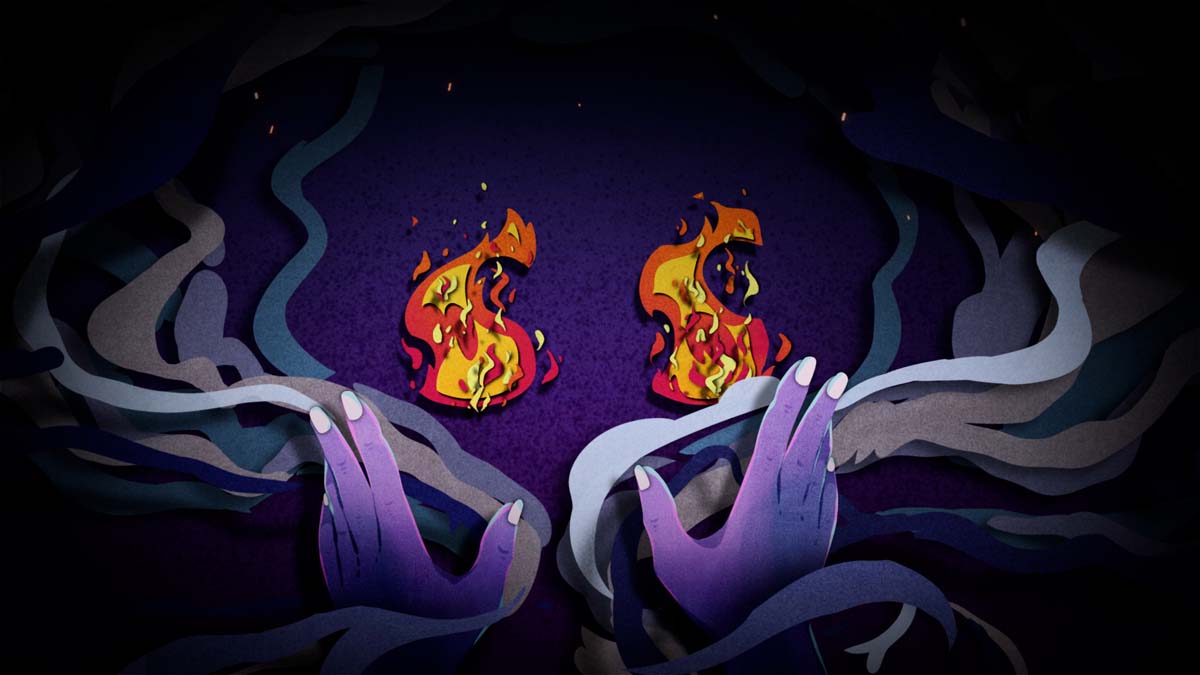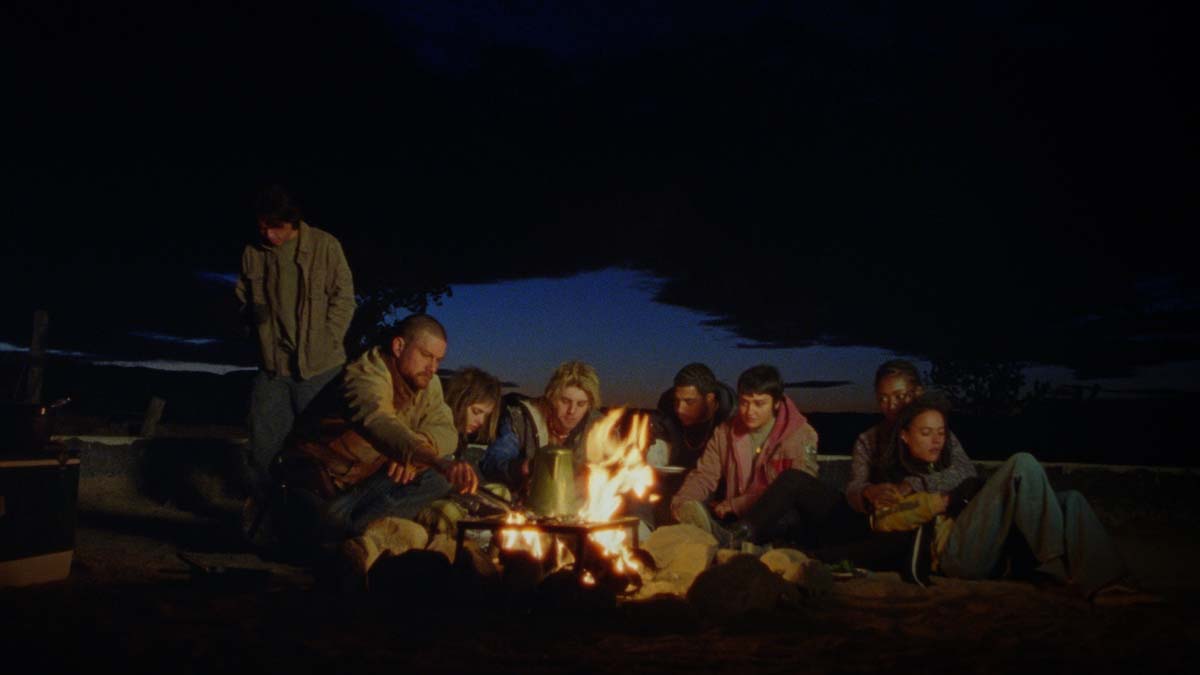BEEF
The editing team beyond the Emmy Award-winning Netflix series BEEF discusses the importance of clarity in storytelling, experimenting with cross-cut structure, and more.
Today we’re talking with Harry Yoon, ACE, Laura Zempel, Jordan Kim, and Nat Fuller about the TV series Beef. This is the first in a series of six Art of the Cut episodes leading up to Emmy voting. Upcoming shows will feature editors from Andor, Picard, Poker Face, The Last of Us, and Wednesday.
Harry Yoon has been on Art of the Cut many times before, most recently for the film, Minari, but also for the films Detroit, Shang-Chi and the Legend of the Ten Rings, and Best of Enemies. Harry was also an editor on the TV series Euphoria.
Laura Zempel was also a previous guest on our Euphoria episode. She’s also been an editor on the TV series Dispatches from Elsewhere.
Jordan Kim’s credits - among others - include Portlandia, Yo Gabba Gabba, Awkwafina is Nora from Queens, and the great satirical series Documentary Now which was featured on Art of the Cut several years ago
Finally, Nat Fuller edited the film The Peanut Butter Falcon, with Kevin Tent, ACE. He was also an editor on numerous episodes of Stranger Things among other projects.
Art of the Cut: Beef
How much collaboration was there amongst the editors, or were you pretty much islands unto yourselves?
ZEMPEL: We were a collaborative team. Harry started us off with the pilot, then at a certain point, he went on a trip. So I came on for a couple weeks in the middle to do some work on the pilot, then Harry came back and took it back over.
Then Jordan worked on episodes five and eight, and then Nat and I worked with those. We started the season remote, so we were all at home. At a certain point, we went into the office with everyone, but then we ended up sending the majority of the team home and the editors stayed in the office.
Nat and I were on the show the longest, so he and I had rooms next to each other and we would check in with each other every day just to say, “How’s it going? What are you doing?”
Sonny and Jake – Sonny [Lee Sung Jin] our showrunner and Jake [Schreier] our producing director – were in the office with us most of the time. So, they would bounce back and forth between rooms and pull us into each other’s rooms. We were constantly in conversation with each other.
YOON: We started the show block shooting – they cross-boarded almost all the episodes. So we’re getting scenes from Episodes One, Seven, Five from the very beginning. It was all hands on deck from the very beginning. Only middle to later in the process did these episodes start to take holistic shape and then people took over the finishing of them.
An interesting dynamic with streaming and the way TV has changed is that you used to do the pilot, and then weeks later you’d do the other episodes. But you four were working across the whole series at all times. Does that change the way you think about episodes, when you can actually see the other episodes that come before and after you?
KIM: I think it was helpful to check in with each other through the process, when we’re working on episodes that are in different parts of this larger story structure, and see, “Does this one thing get referenced? Do I need to keep that thread going?”
We were adjusting throughout the process – maybe little storylines that get hinted at that maybe get taken out, so you might not need to revisit later on, or you just keep in mind all of the little pieces that have been building from the beginning of the season to the end.
A couple of key scenes – like the car chase – were not filmed until very close to the end of production. So, we had been watching cuts of the pilot for quite a while and it wasn't really until that scene was shot and cut into the episode that it really started to come together and show the bigger picture of what they were going for. Because there are little moments in that sequence that reverberate and are referenced throughout even later episodes that I was working on, including eight and five.
YOON: That’s a great point. As Laura mentioned, I was primarily involved early in the process and then had to go away because I had to move on to a feature. I then touched the first episode again a little bit later when I came back.
I was seeing how there’s an emotional puzzle as far as where the characters are through the series. I’m not just talking about Danny and Amy, I’m talking about all the secondary characters as well. Especially someone like George who’s such a foil through the whole series in a way.
It was hard to get a bead on how to shape individual scenes until you started to see the other episodes take shape, see where we were targeting things – not just on the page, but from a performance standpoint.
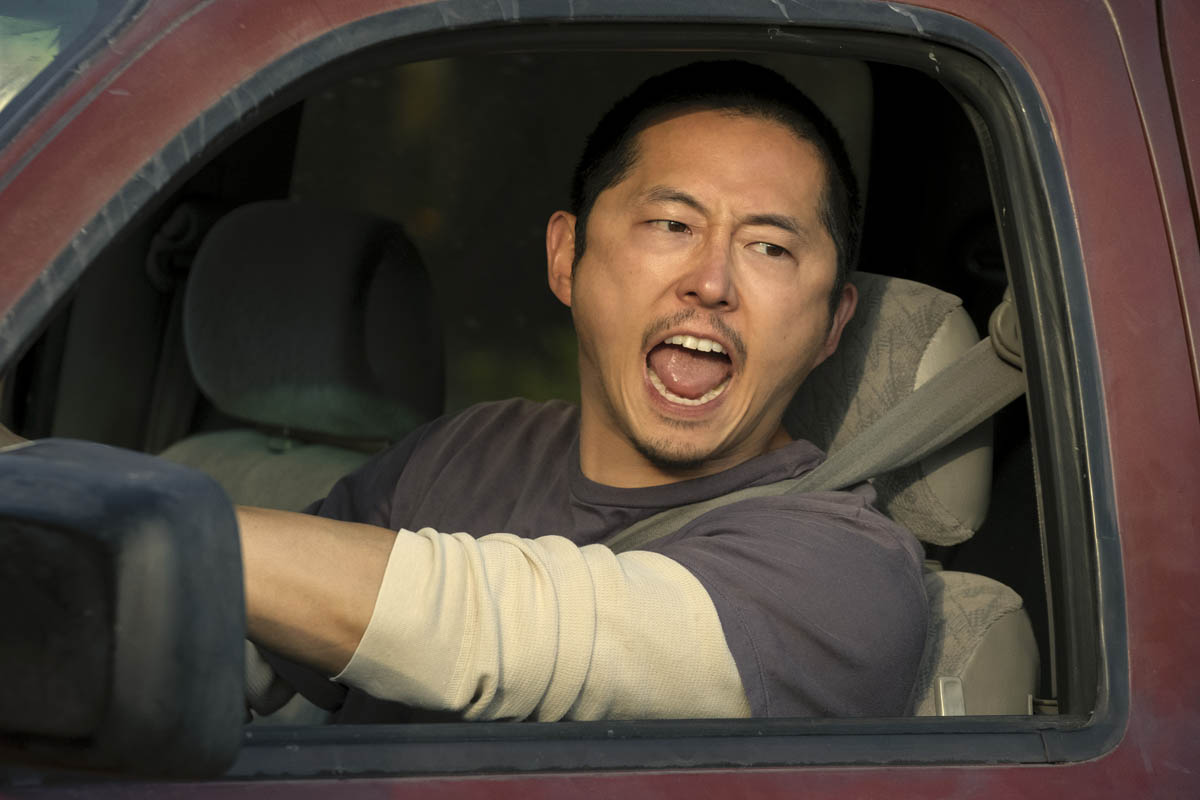
As somebody who left early and then had the pleasure of being more of an audience as these episodes got finished and as the series emerged on Netflix, it was such a pleasure to see how Laura, Jordan, and Nat had done this beautiful shaping of those performances, because it was not clear from early dailies how everything was going to fit together.
I imagine that was part of the challenge. Things were hard to lock until the very end because there were all these nuances of character that you wanted to seed in later episodes that couldn’t be done until you saw more of the shape of this thing.
FULLER: It is interesting how it’s all one big piece, and then suddenly at the end it’s okay, we have all the pieces now, we have the complete picture.
That’s the interesting thing about cross-boarding. One of my first scenes was from episode seven, so I think, “Okay, I’m going to cut it this way,” and I’ll put a pin in it and come back to it later, once I know what these people are coming from and going toward.
You do have to work in it a little bit piecemeal, and then once everything comes into place, you say, “Okay, now I can go back and maybe change this subtle performance here. Or maybe take this scene out.”
As Jordan mentioned, I think we had one instance where Laura watched one of my episodes and there was a line that one of the characters said that affected something that happened in her episode. So she went to Sonny and Jake and said, “Hey, George said this line. Then later on in my episode it doesn’t make sense now that he said that line.” So that collaboration was there, where we would watch each other’s episodes and make sure we were tracking the whole season.
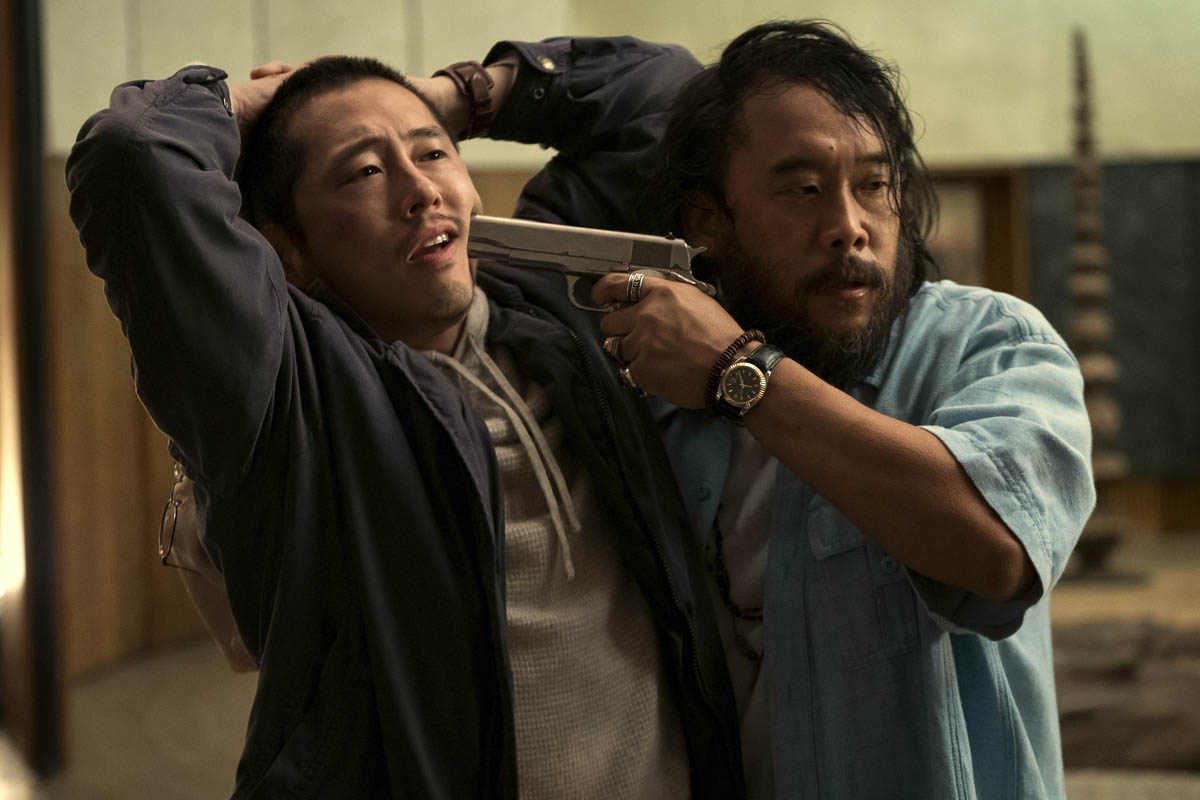
ZEMPEL: One of the things that really came together for me once I started seeing episodes as a whole was the balance that the show has between darkness and humor. Danny and Amy talk about this void inside of them. We wanted to convey that to the viewer – why these people are the way that they are – give that enough weight.
We have so much humor in the show and finding that balance, especially with the secondary characters of just, of just – how funny is this scene supposed to play? Or how grounded is this scene supposed to play? That was the calibration throughout the whole series. So that those emotional moments really land.
I’m working on Volume Two of Art of the Cut right now. The chapter I’m working on today is about balancing the tone and temperature of performances based on context.
Talk to me a little about instances where during dailies you might have cut someone one way, and then once you’re able to see either all of the episodes, or at least the full singular episode, you realize you need to change the performance.
KIM: I would say that of all the editors, I come from the most straight-up comedy background. That was one of the things I was really excited about on this show – the opportunity to work on something that blended those tones.
One of the things that struck me about the process when I was working with Jake, our producing director, on a scene from 108 that was a little bit more emotionally intense. We added back in so much air, so much space to let the characters consider, think about and react. Seeing those reactions non-verbally lets them resonate in way that I typically don’t have in the comedic stuff I’ve worked on.
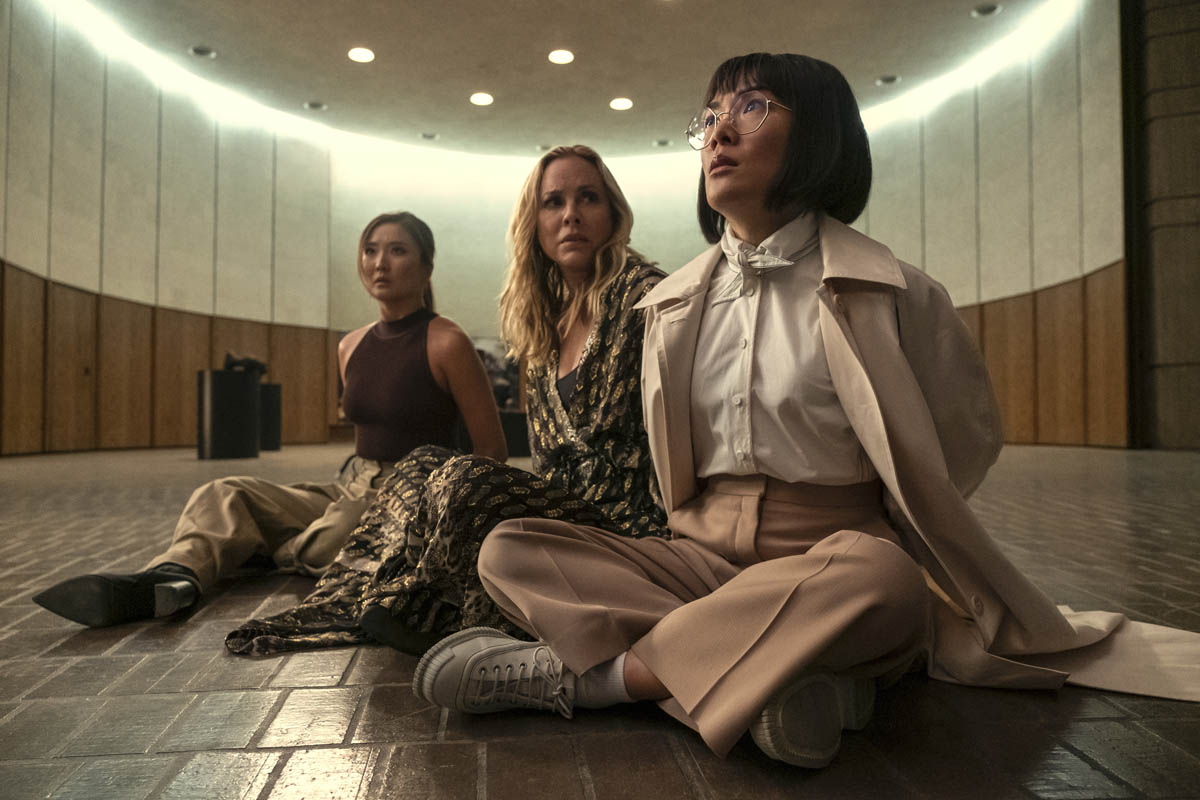
In the first director’s pass from my editor’s cut, we added about three minutes back in of people just sitting and thinking about and processing the intense conversations that they’re having. That really stuck with me.
In my first cut, I’m trying to balance not having a crazy TRT with letting these scenes breathe. I was really impressed with how much Jake wanted to prioritize sitting in these moments and at least trying them out to see how far we can push it to even have the rhythm feel like a feature at times.
YOON: One of the things that is striking about the way Lee Sung Jin, our showrunner, approached these moments for these characters, is there’s a level of authenticity that doesn’t allow it go into farce, which it really could.
In particular, we were talking about how people react to the Korean church scenes. It would have been very easy to play the scene where Danny walks into the church after he’s feeling contrite after almost committing a terrible act for laughs. We could lean in to how absurd it is that he’s having this repentant moment.
Yet, as funny as it is when he starts to break down, there’s also this real feeling of specificity, and an understanding of what that moment feels like for someone who’s genuinely in that context – the cultural context, the spiritual context, et cetera.
FULLER: I feel like we have a very dark comedy vibe in our show.
One scene that I found rode that line was when George and Amy are talking to each other in the bedroom. She’s having this very deep admission of, “This is how I’m feeling.” George completely misses the cue. It strikes a balance because it’s actually funny the way he reacts. But it’s also sad because he’s not there to support his wife in that moment.
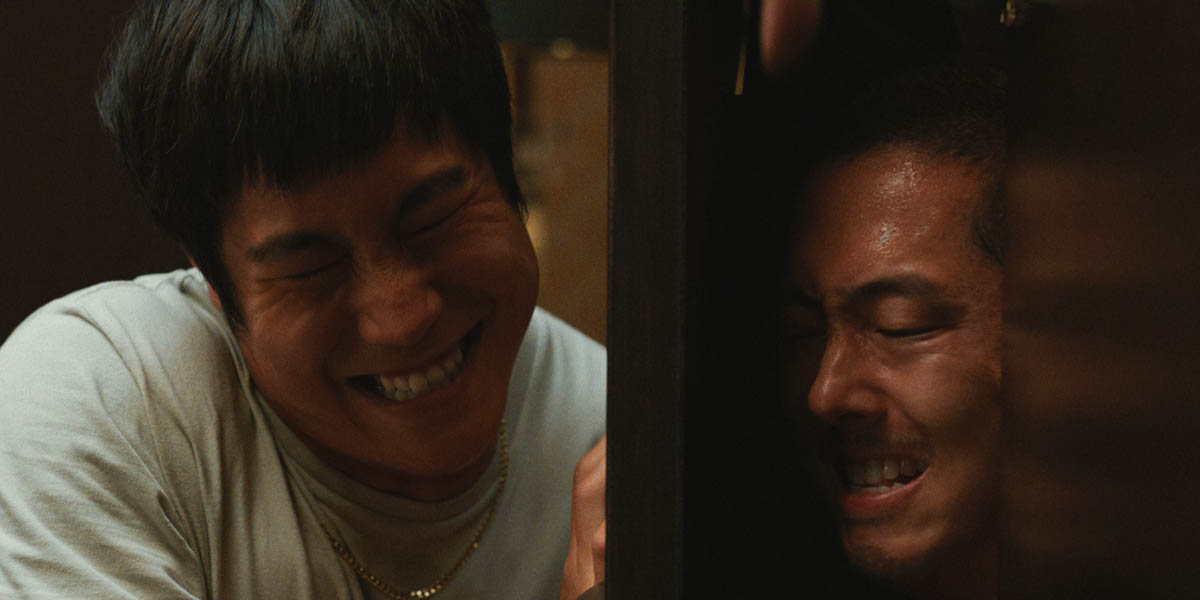
I think that the writing in the scenario has that balance built in, and then it was our job to make it really sing. I always laughed at George being such a doofus – missing the cue – but I’m also feeling sad because has lost this connection, and it actually makes her spiral and shutdown even more.
I love that. That makes me think of the editor's need to be empathetic to the human condition in itself, but also to the specific conditions of the characters. Does anybody want to talk about how you saw the truth in a scene that affected you or that you emotionally connected with?
ZEMPEL: When I first read the scripts, I was very drawn to Amy, no surprise.
But I think it’s such a difficult thing to convey this inner yearning, especially when Amy’s life looks so perfect on the outside, and yet she has this thing inside of her. It’s what Nat’s speaking to – just keeping the audience tracking Amy’s emotions, with everything that’s pent up inside of her. She does look for moments of relief, for instance when she’s talking to George in the garage when she gets home from the road rage. He just shuts her down.
Ali Wong’s face just tenses up in those moments. She just completely shuts down. I could always check in with her. Whenever I felt that switch, those were the moments that I clung to and tried to build scenes around.
Let’s talk about spotting performances and building around them. Were there instances where you saw an emotion or a non-verbal thing in a scene where you felt like you needed to build a scene around that moment?
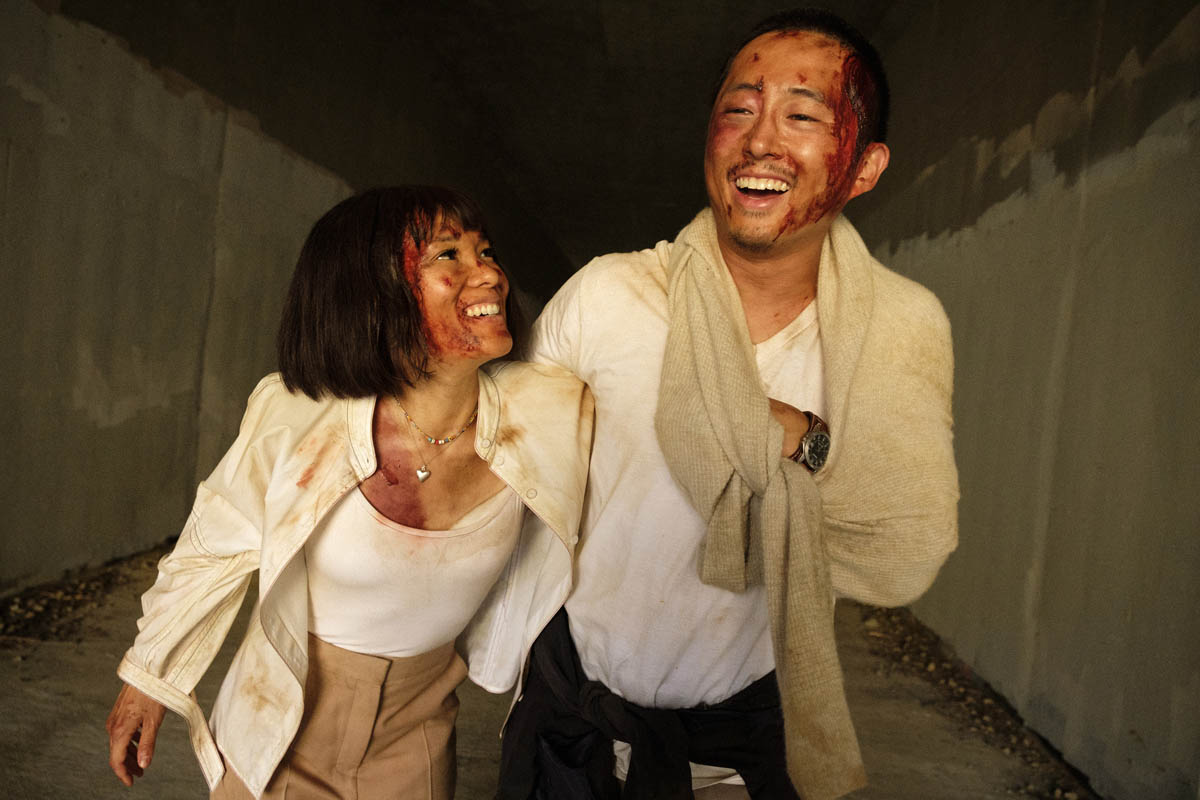
KIM: I really connected with the scene in 105, when Danny and George are bonding over the sculptures in his studio. Steven [Yeun] is so good that it was hard to want to cut to him at every moment, and just see all the non-verbal things he’s doing. It’s this very delicate tightrope of manipulation. All the characters are desperate to connect with someone, but they don’t know how exactly, and they’re always running into their own flaws in that pursuit.
There are so many moments – like when Danny and Amy are in the house together, when they’re just about to connect, and then Danny registers that it was Amy in the car – where they’re so close to connecting in a genuine way. But there’s all these other layers of things going on, and I think that is very relatable to people, just the layer of feeling as a creative person exposed and wanting that validation and recognition that someone else gets what you’re trying to do.
That was one of the heartbreaking things about that scene with George. He felt seen in a way that he hadn’t been by a lot of the people around him.
YOON: That’s a great point. One of the things that I was reminded of is how consistently in the show, the decision- making and the realizations only serve to continually isolate the characters. There’s something that they know or there’s something that they realize or there’s a decision that they make that makes them feel even more alone.
That happens consistently. It really depends upon this incredible writing and setup, where it has to land in that closeup and you see the realization that, “Oh, I’m even more alone now.” That’s why I think ultimately the show becomes moving – the only person who truly sees their counterpart is this enemy that’s been building up over the course of the season.
They’re the only one who truly knows how depraved or how repentant their counterpart is. It’s because each time we’ve seen Danny become increasingly more alone, we also see Amy become increasingly more alone. It’s happened in these shifts in their expressions as things lands on them.
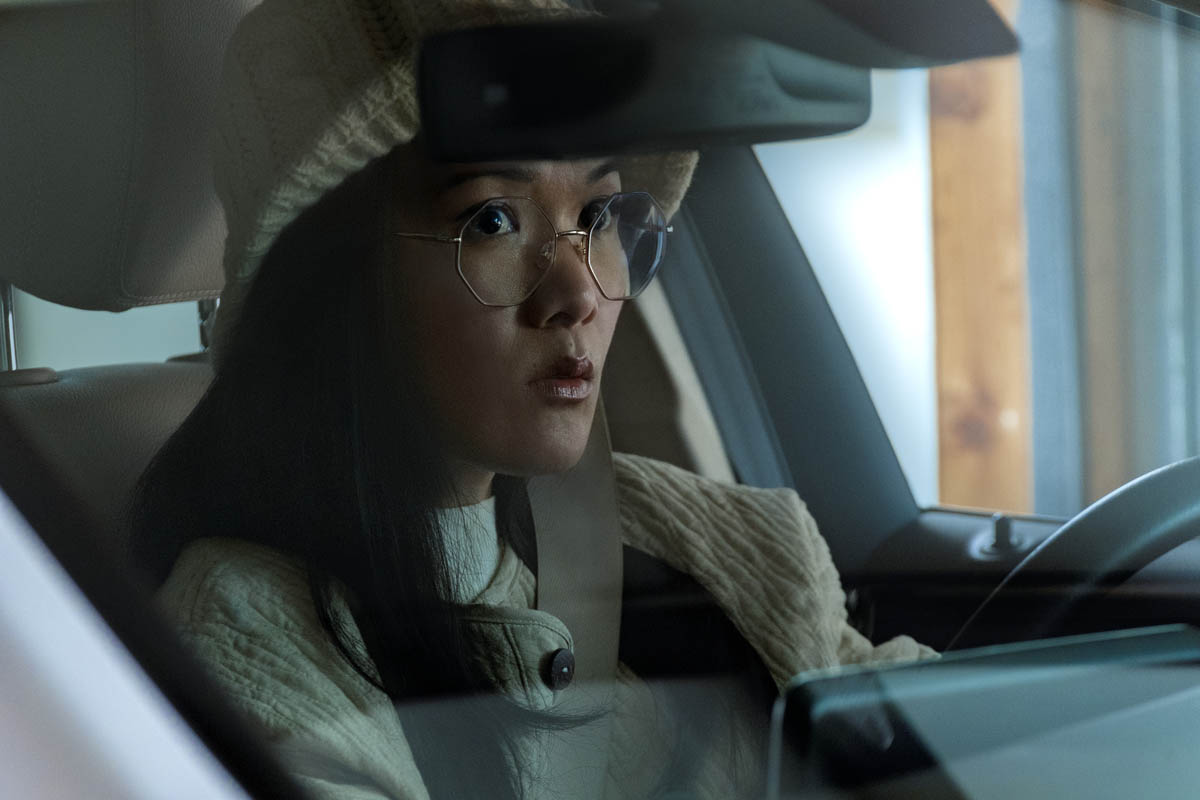
Even at the beginning, you watch Amy confessing this incredibly private moment of when she felt at peace. But she’s confessing it to her child but her child is sleeping. That’s the only time in which she can be truly vulnerable, truly be heard, truly be understood, and no one’s listening.
That just keeps happening again and again. That's what ultimately makes the series and our heroes feel so identifiable. If there's any consistent emotion in our continually alienating society, it's this feeling that we are alone and we might not be understood in a way that we truly want to be understood even though we're constantly surrounded by interaction. That's why the show might resonate with the audience in the way that it has.
KIM: The key to the show for me is that these characters are getting vicarious energy from this perceived external enemy, when obviously they are their own worst enemy. That’s the conclusion that they’re all coming to through the process. They’re constantly running into these same problems. The consistent thing is their own flaws.
Harry talked about the fact that Ali Wong’s character - Amy - is isolated. It always seems that is revealed in reaction shots – typically because the thing that is isolating her is a good thing, like her husband talking to her in a very nice way. It’s her reaction that reveals her isolation. Can you talk about the reactions and using those reactions to reveal characters’ inner thoughts?
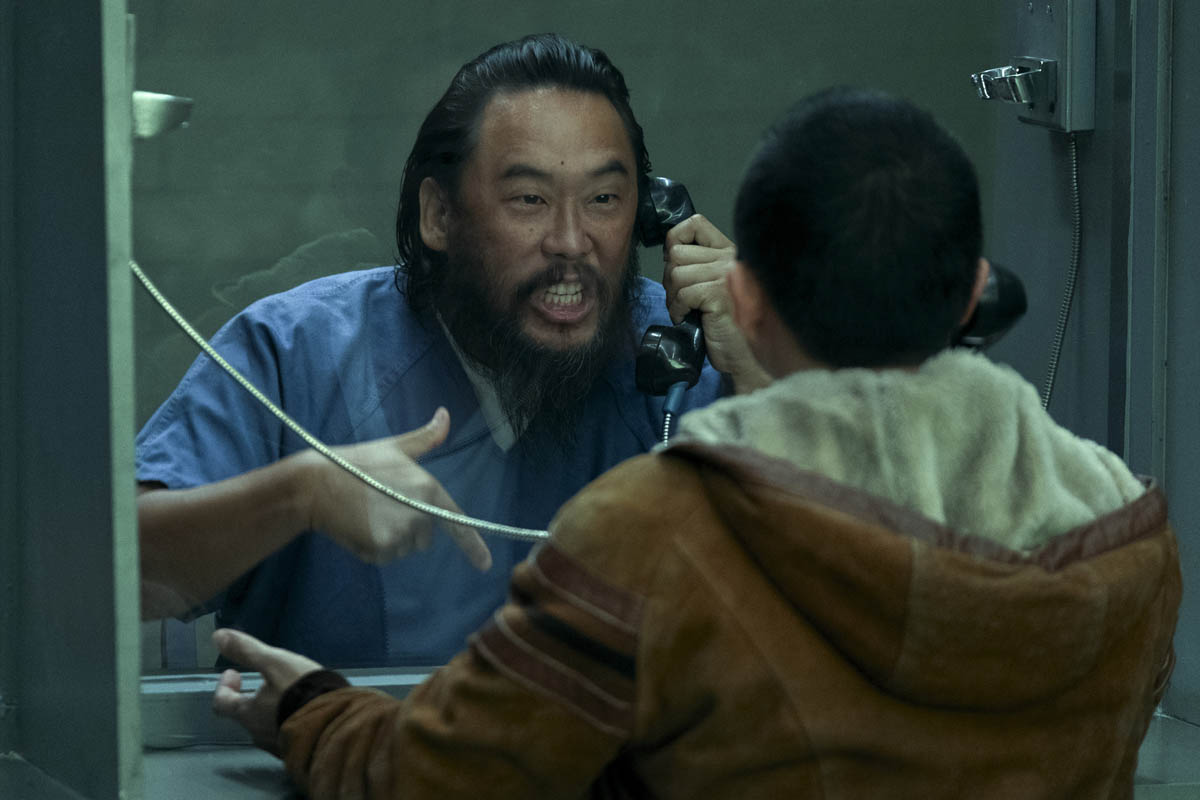
FULLER: One of my favorite scenes is in Episode Nine, when Danny confesses to his brother Paul that he threw away his college applications. There are a lot of nonverbal cues there.
Both Danny and Young [Mazino, who played Paul] did a great job, but my favorite part was when he’s holding out his arm as if to say, “Come with me. Let me save you.” But Danny’s saying, “No. Go away. Go away. Go away.” The only way he can truly get Paul, his younger brother to go away is by saying, “I did this horrible thing to you and ruined your life.”
Then you see Young’s arm just drop down, and that was it. That was the signal that, “Okay, I’m going to go now.” I think there’s a lot of unspoken power in that moment especially. Then you see Danny alone – like Harry said, he’s pushed everybody away – and he’s truly alone in that moment.
ZEMPEL: Nat, that is one of my favorite scenes. I love how you cut that.
When you all were talking, I was thinking of another Paul scene – it’s funny because Paul is the bridge between Amy and Danny. One of my favorite scenes for Ali [Wong] and Paul is in hotel room in Vegas, when they’re talking to each other, and Amy has actually been vulnerable after she’s been shut down by George so much. Then here comes this young guy who is open and thinks differently. It’s exhilarating for her, but she finds someone she can talk to. I love that moment.
When Paul talks about Danny and he says, “I think he’s depressed.” He blames everyone but himself. He starts talking. He unpacks Danny to Amy and we just hold on Amy listening. It’s such a good performance from Ali. She’s just taking it in. That’s the moment when she realizes, “There’s more to this guy that I got in a road rage thing with than I anticipated. Maybe he’s like me. Are we both fighting the same demons?” There’s just so much going on in her head. You can just see her wheels turning. We’re hearing everything that Paul is saying but watching Amy process it is more important and I think it resonates more for the viewers to be able to watch Amy process this description of Danny’s psyche, rather than watch Paul deliver the lines.
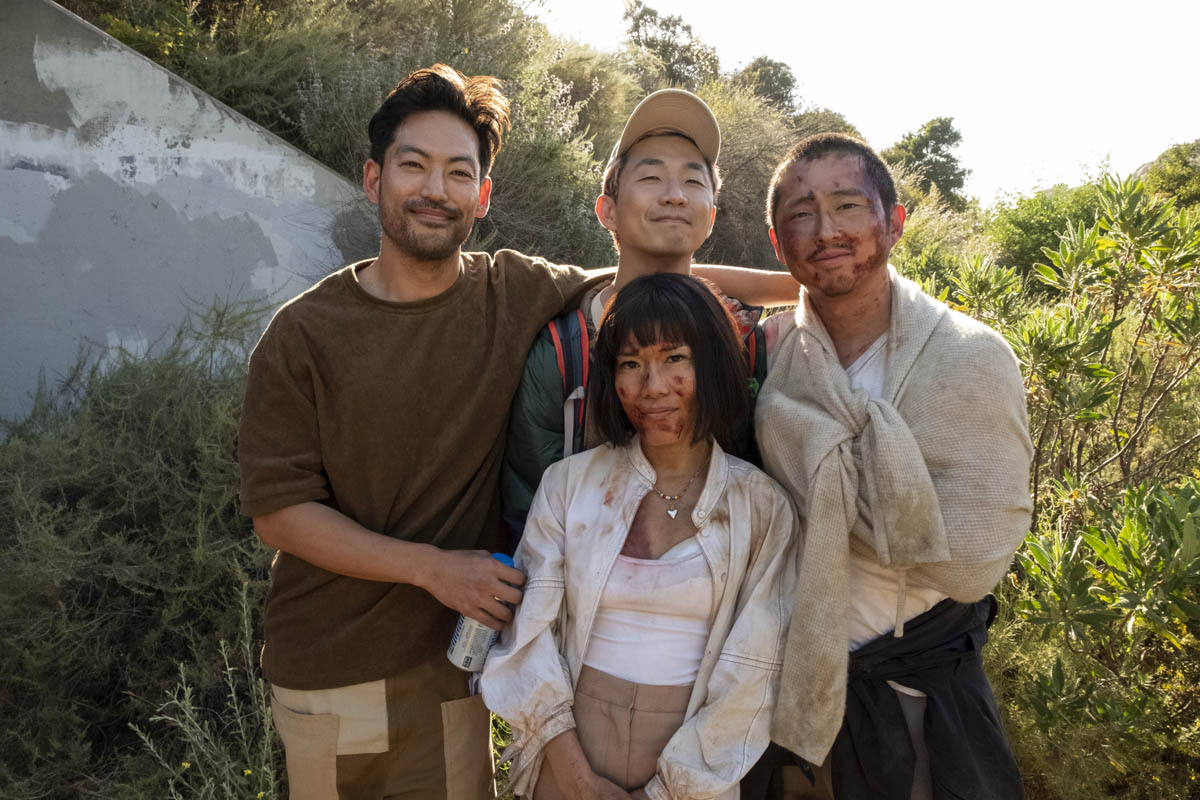
That’s one of those moments where I think shot choice and performance adds a whole other layer to the scene. We as an audience, we already know this stuff about Danny, but watching Amy register it is so moving. I think it’s a good fulcrum for the series.
It’s just a moment of finding out more about your enemy and humanizing them.
There were two places where I noticed shot sizes.
First, that scene with Danny telling the brother that he threw his applications to college away. They’re separated – one brother’s way up high on a wall and the other brother’s down on the ground. You don’t go to a close-up there.
The other is in the final episode, where Amy and Danny are lost and they’re screaming at each other from opposite rocks. The whole thing is played on super wide shots.
Can you talk to me about that choice of playing an emotional scene on big wides?
ZEMPEL: Nat and I both did a lot of work on the finale, but I did the initial pass with Sonny, our showrunner. He directed that episode. I got the dailies for that scene with that huge wide, and in my first cut I held on the wide two shot for probably way too long, just because I loved it so much.
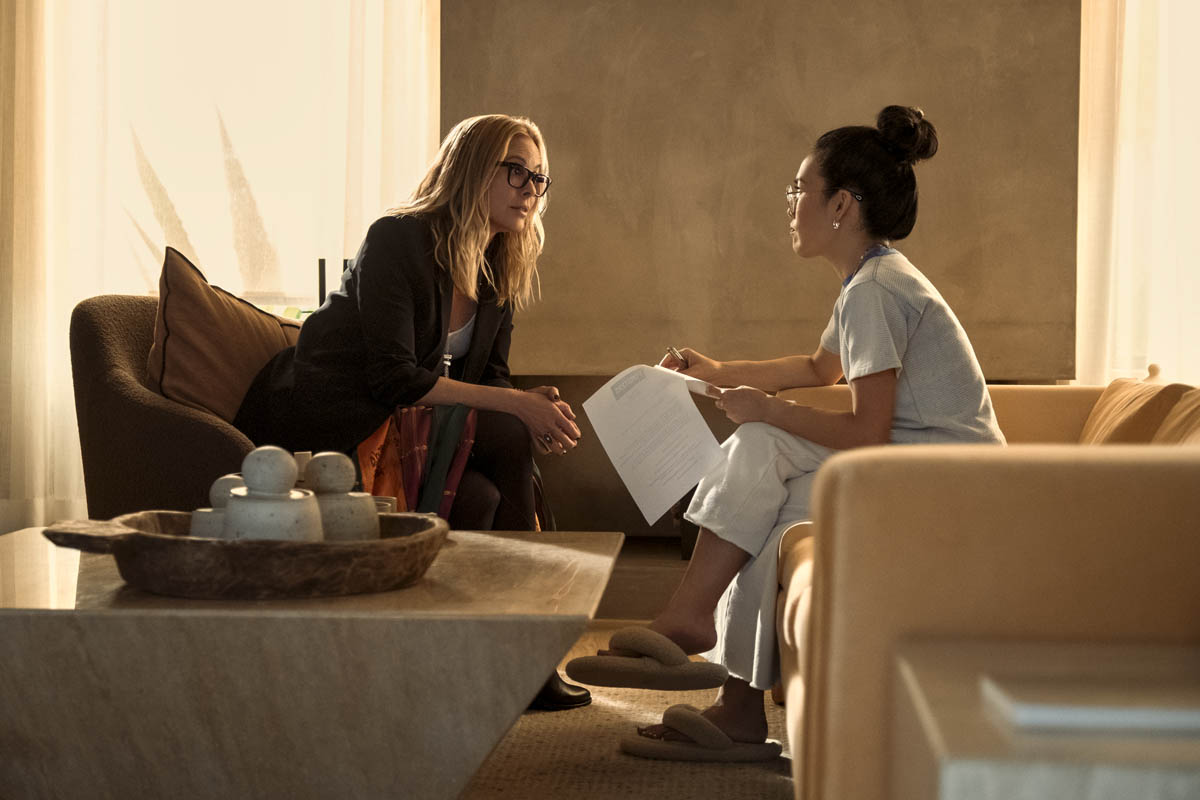
It felt so distinct. It felt like such a bold choice. I was so excited by it. Sonny, Jake, and Hikari – all of our directors – did such a great job in shooting this. It adds such a level to the characters and the emotion. The expanse of those wide shots in the finale, it also just helps them feel so isolated it’s these two people have driven everyone else away and they’re very tiny in the frame. You just feel the expanse of how far they’ve gone on this road rage thing. Why can’t you guys just let it go? You’re literally going to die in the woods. Then you hear them screaming. So that’s the comedy. It’s the isolation plus the comedy plust the rage, and it’s a blast.
It also sets up the opposite moment. They're so far apart now and then a couple scenes later they're literally side by side.
ZEMPEL: I re-watched the finale this morning, right before this interview, and the scene when they're poisoned and they're laying next to each other on the ground and they're looking at each other. When Danny says to Amy, “I see your life, you poor thing.” I am always gutted by that. These two people who've gone so far and through all of this, and here they are just inches away from each other on the verge of death. They can finally let it go. It's great. It's a testament to the way it was conceived and shot, and I'm so happy all of the emotions came across.
YOON: This is a good opportunity to talk about Grace Yun’s amazing production design. I think that when everyone was interviewed to come onto the show, one of the topics that came up was this idea of, “What is the void?” That sense of emptiness, that sense of meaninglessness, that sort of ache we all carry around.
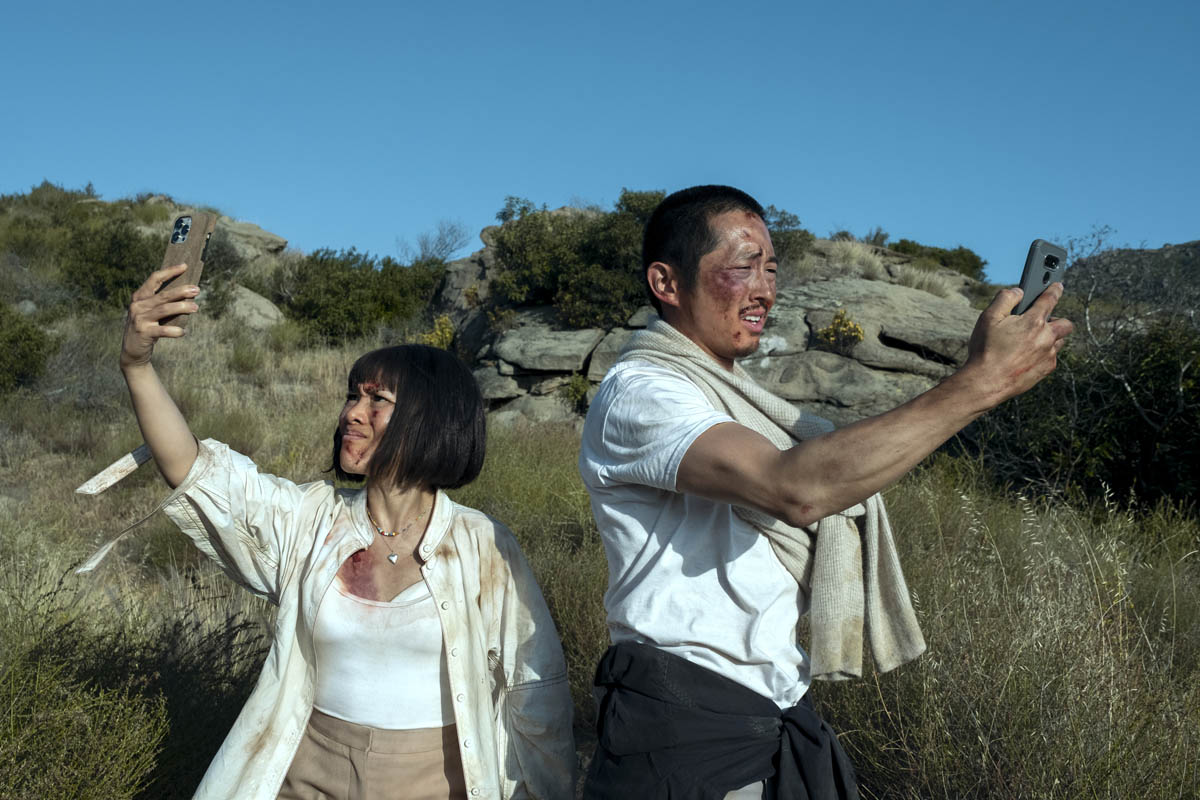
Amy’s home is a good example. It’s this modernist, slightly brutalist construction of mostly concrete. It’s supposed to be this achievement, yet it doesn’t necessarily feel warm. Sometimes, depending upon how it’s captured, it feels bare and almost prison-like in a way.
We wanted to emphasize that these are not hospitable places in the subjectivity of the characters. That’s something that happens consistently throughout the show.
Jordan’s home is another great example of that. It’s supposed to be this space we all dream about, right? This home of a billionaire, and yet it feels inhospitable. It feels very dangerous, it feels very unappealing. So you have this irony of you imagining a billionaire's house to be this amazing place, and yet you wouldn't want to spend a whole lot of time there. There is that tension in almost every space.
KIM: I also think compared to a lot of typical shows, staging, and coverage the use of singles made the tone feel a little bit more isolating and more in the head of each character.
Talk to me about intertwining the various stories. Were there places where you felt like you needed to change the script cutting between storylines in the cutting room?
YOON: The original structure of the first episode was much more separate. Originally there was Danny's story and then Amy's story, and then only at the very end did they re-encounter each other.
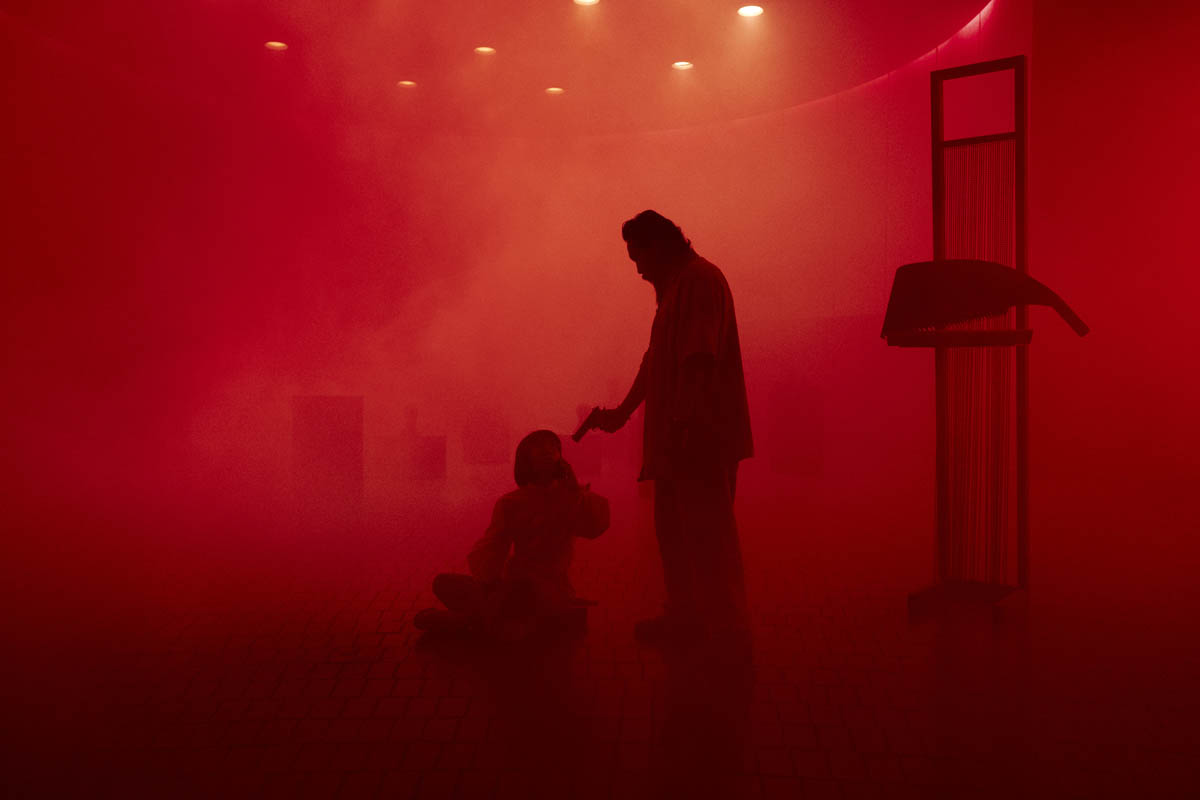
It was such a bold choice that Sonny originally wrote. I think it worked beautifully. But as we were trying to emphasize how intertwined and how parallel their lives were, we started experimenting with more of the cross-cut structure that you see in the final cut.
One of the pleasures for me is that we put together that cross-cutting structure so that you started to see these parallels. One of the beautiful things that Laura did was start finding shots that emphasized these beautiful match cuts that were both visual and emotional.
My favorite example is the moment when Amy is doing something very weird with the gun. She finally gets it out of the safe – that used to be its own comic and strange sequence – but we crosscut it with Danny’s obsessive search for the house. We discovered that showing those two bits of heightened emotion - going back and forth and propelling them towards each other into this climactic encounter – in the cutting room.
Laura did that so beautifully at little moments throughout the episode. You have to see these characters in relation to each other. You have to understand these characters’ lives and their obsessions, and their faults, in relation to each other. That emerged as we worked on that episode with the key creatives.
Laura, can you think of any other examples of those juxtapositions that happened because those things were intercut when they weren't meant to be?
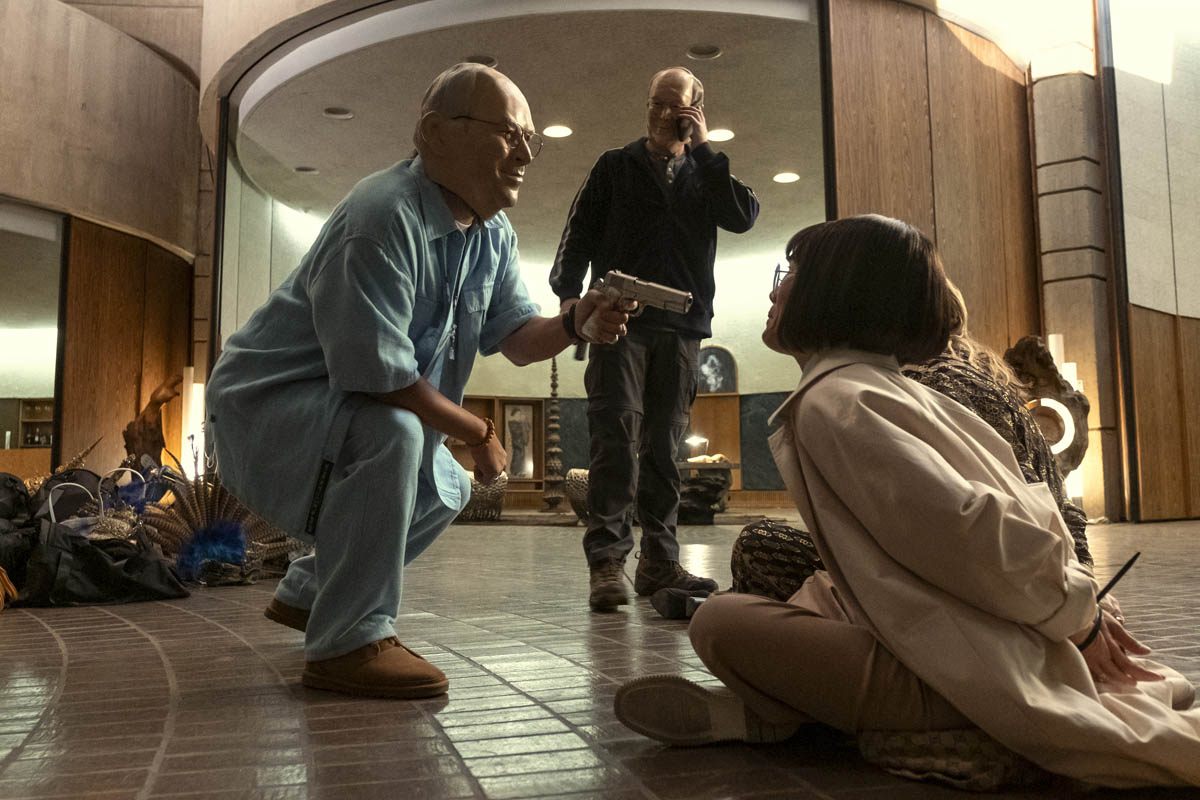
ZEMPEL: The pilot is really the one where we experimented the most to find anything that could draw parallels between Amy and Danny for our viewers.
For example, when Amy’s at KoyoHaus and the woman asked to have a photo taken with her, we hear the sound of a lens snapping. Then we cut to Danny’ installing the Ring camera. We go from camera to camera, to draw a parallel. This is Amy’s work life, this is Danny’s work life. Danny sees Paul so we can get a sense of his home life. Then Amy comes home and we meet Fumi. So again, it’s work life then home life.
We were trying to finesse and hone in one these similarities between these two characters because even though their lives are so different, they do have very similar parallels going on.
I was thinking about how much I cared about all the characters, even though they are on the surface, completely unlikeable characters. Talk to me about building that sense of caring for these people despite their flaws.
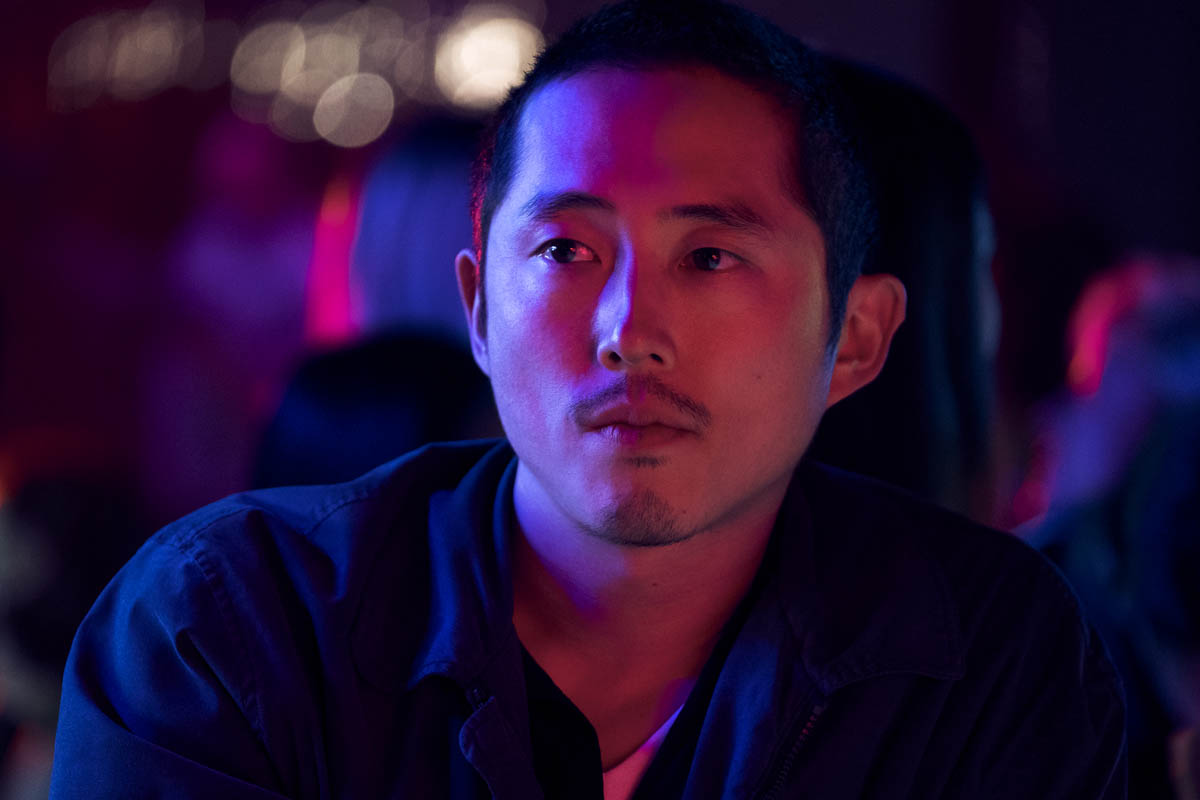
ZEMPEL: I think as an editor, you have to fall in love with your characters. That's step one. That can be finding something that feels true in the performance, but we were lucky that a lot of that was in the script.
I think flawed characters are way more interesting because human beings are flawed. We all have things that we're insecure about and wish we could change about ourselves, but we can't.
I feel like Amy was a little bit tougher to care for than Danny, because with Danny it feels like the deck is stacked against him.
But Amy has an affair. She blows up her life completely. It's hard to root for her, but I think Allie Wong and Sonny's scripts brings a lot of humanity and depth. That's why we were so focused early on with making sure people understood what Amy was going through. Because if you understand her right away, you're along for the ride as she's making questionable decisions.
That's why those parallels in the pilot were so crucial for taking you on the journey that they go through.
What kind of judgment calls do you have to set aside to be able to edit someone empathetically?
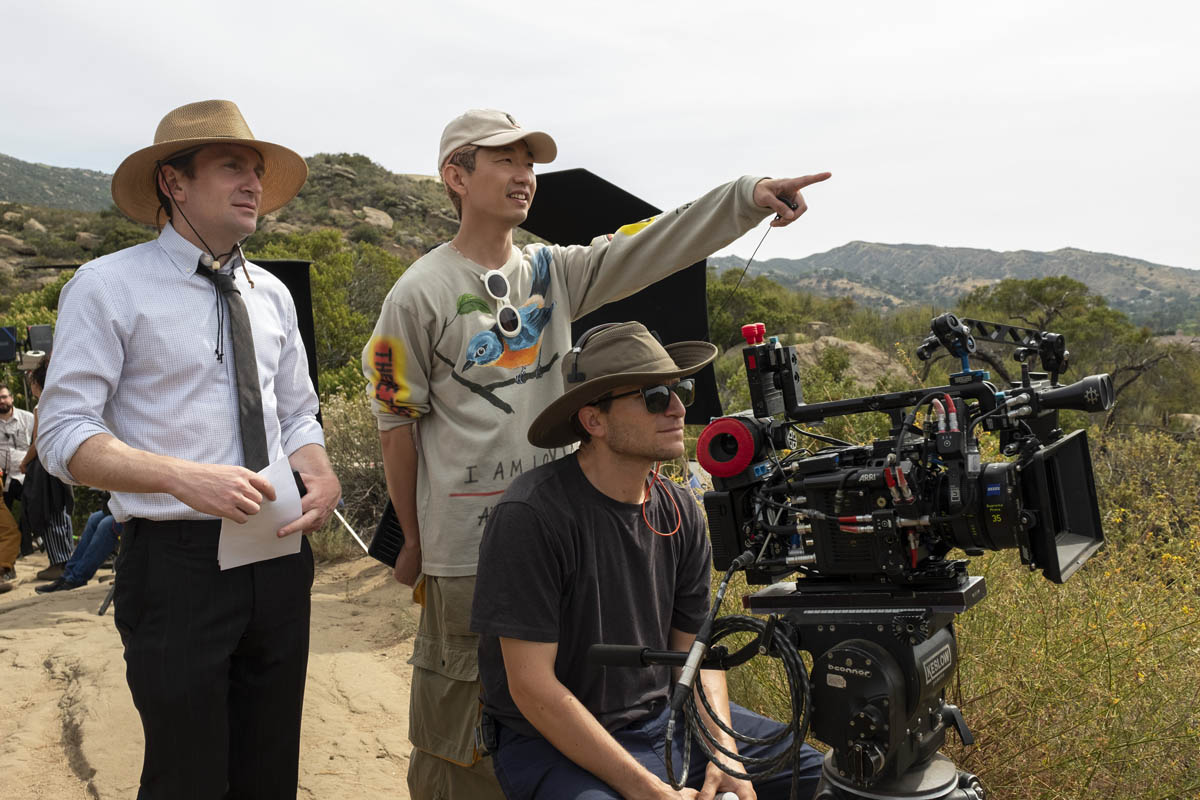
KIM: I was just thinking about when we were talking about making the characters more relatable in the face of all the bad things that they do. Episode Eight, which features all the flashback moments, was helpful in building the empathy towards the characters because you're seeing where their flaws come from.
So you see where Danny is struggling with Paul leaving the home and potentially applying to college. Then you see him make that decision to throw away the applications, which is a heartbreaking decision on both ends. That leads to that scene that we talked about in Episode Nine, that's the completion of that where he confesses what he did.
The key to empathizing with these characters that make problematic choices is a combination of seeing where it comes from and seeing that there's something inside them that wants to be good but they're just constantly coming up against those flaws.
They're not just relishing being bad. It's just this constant cycle that they can't break.
FULLER: I agree totally. I felt myself rooting for them and wanting them to be successful, but they were inhibiting themselves based on these choices they were making.
It almost feels like I would imagine, a parent and a child. The child's making these choices, and you're like, “Oh, why did you do that?” But at the same time, you're like, “I still love them. Hopefully, they'll learn from this.”
I think finding those moments of real disappointment and seeing the reactions of the characters when they find a moment where they're not achieving their goal or they're not hitting what they want was really important.
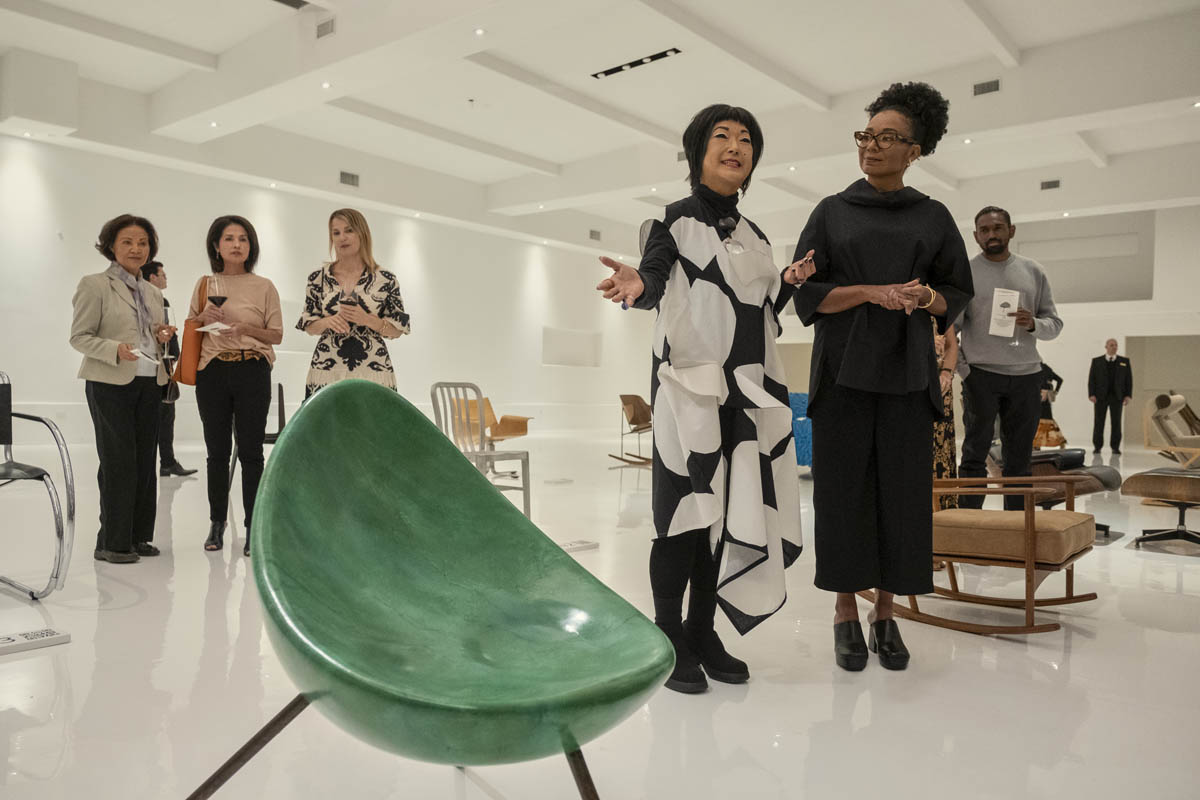
A scene that exemplifies that is in Episode Seven where Danny goes to Amy's house and he says, “What do I have to do to get to where you are?” And she responds, “What are you talking about? My life sucks too.” You see his face kind of drop where he feels, “Wow. That's not the answer.”
They almost reached the answer, but then they're just a little bit short, so they gotta keep pushing and keep pushing. I was always at least trying to find those moments and root for the characters. Then once they failed, okay, let's pick 'em up and keep on moving.
KIM: There's also that scene in 108 when Amy goes back home to visit her parents when she hasn't been home in a while. They've been on all these trips. They have this whole other life and she's lost connection with them - yet another way that her character is isolated.
They have that conversation while they're washing dishes and she talks about the trauma of all the things going on between her parents when she was a kid. She has that line about the generations of bad decisions living inside you - that's another kind of heartbreaking moment that you feel for the baggage that has led to all these other decisions throughout her life.
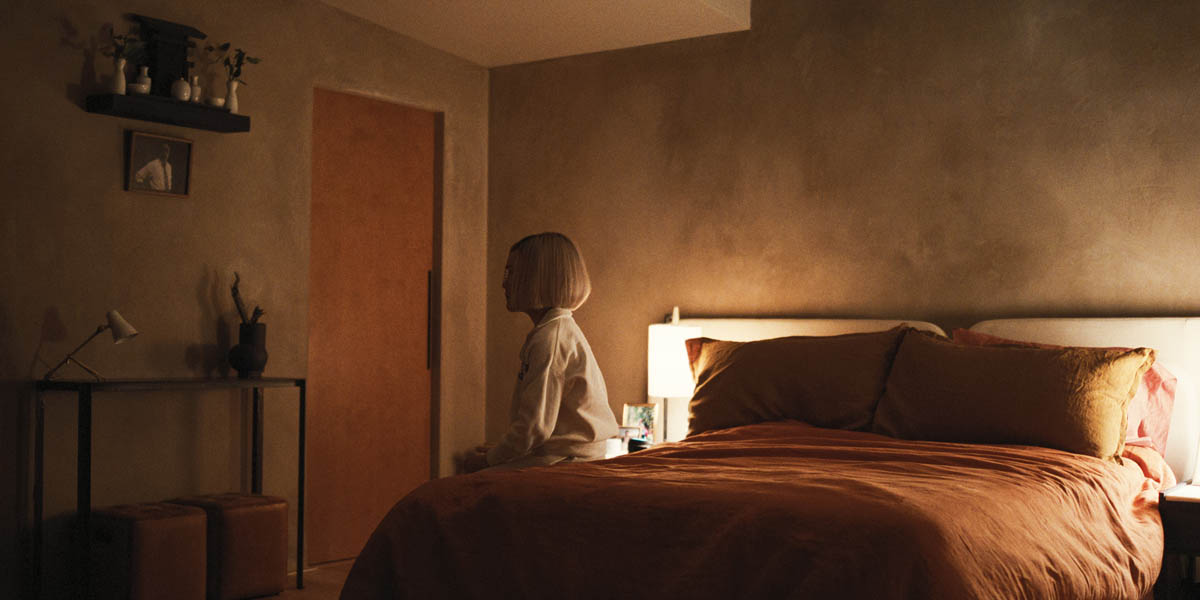
YOON: Our goal is always clarity, right?
We want to make sure that within each scene, within each episode, and in the series as a whole, you may not sympathize with the choices the characters make, but I think it's always really clear why they're making them, why something feels justified or why a situation feels like it's not enough.
In order to get to that clarity, you can't have a prejudgment about the actions themselves. You have to get into their heads to be able to say, “Oh, I have to explain. It's because of this loneliness.” Or, “I have to explain it's because of this ache.” Or, “I have to explain. It's because they feel more sinned against than sinning, that they feel justified in their actions.” You have to ultimately empathize with them in order to convey that.
That's the pleasure of inhabiting these lives. These characters go a little extra step that you might be hesitant to do so yourself, but there's real pleasure in understanding why that's justified for them. Understanding that you might not make that same choice, but to really understand that somebody might be motivated to do that.
Can you talk about why you wanted to do this particular show?
YOON: For me in particular, it was wonderful to see Asian American characters at the center and not be heroic. To be as flawed and as complex as I know all human beings to be. I thought it was hilarious too.
I also really loved that Sonny was interested in exploring this sense of the void, exploring this sense of, “What is the thing that we all feel inside us that's like lacking, this kind of hole in our hearts?”
I was thinking, “Is it even possible to do that in a half-hour comedy drama?” The challenge of that felt exciting too if we could capture that feeling. Everybody involved did such an amazing job. I feel like that's what is resonating for people and is really exciting for the audience.
Laura, what about you?
ZEMPEL: The script came my way because Harry was going to do the full season, but the start date pushed and he had to go onto a feature. So, I knew Harry was attached right away. Harry and I worked together on season one of Euphoria, and Harry has been a mentor to me so the opportunity to work with him again was a huge draw.
I read the scripts and I loved Amy's character. I think this complex female loneliness - when your life looks so picture perfect on the outside, but internally you feel like something is missing is the really interesting thing - it's very difficult to convey. I thought it was an exciting challenge.
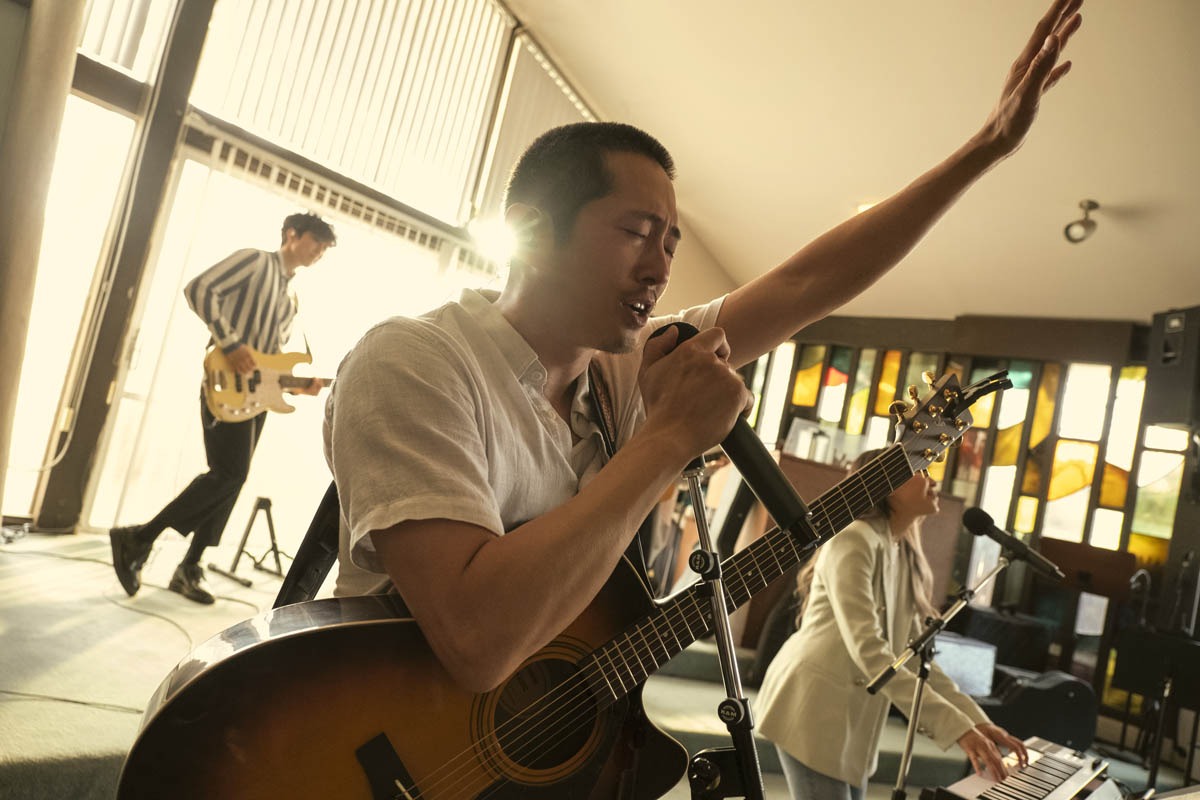
The other thing that I loved about the scripts was that Sonny wrote the needle drops for all the end credits at the end of the scripts. They were so bold and so funny and so out of left field that I said, “If this is where the showrunner's mindset is, I got to meet him.” I got to find out more about this, because Stephen's singing Incubus at the end of Episode Three killed me in the script.
I remember going to youth group on Thursday nights at the local church because that's where all the cute boys with guitars were. That moment felt so true and so cringe-y in the best way.
Love it. Jordan, what about you?
KIM: I saw the initial announcement in Deadline about the project.
I contacted my reps as soon as I heard about it, considering the people involved and the subject matter. My dad was born in Seoul, Korea. I'm half Korean and I've always been excited to have the potential to work on projects like this.
I feel like it's only really been within the last few years that there's even been the opportunity to tell a story like this - totally building off what Harry was saying about having flawed Asian American characters and the specificity of what they were trying to capture.
There are so many little details that feel really authentic to my life or people that I know. It's always exciting and cathartic to get to work on projects where you feel that much personal connection to it. So with that, plus the genre and the opportunity to work on something that feels tonally more of an exciting challenge with an incredible group of editors, it was just really hard to pass up.
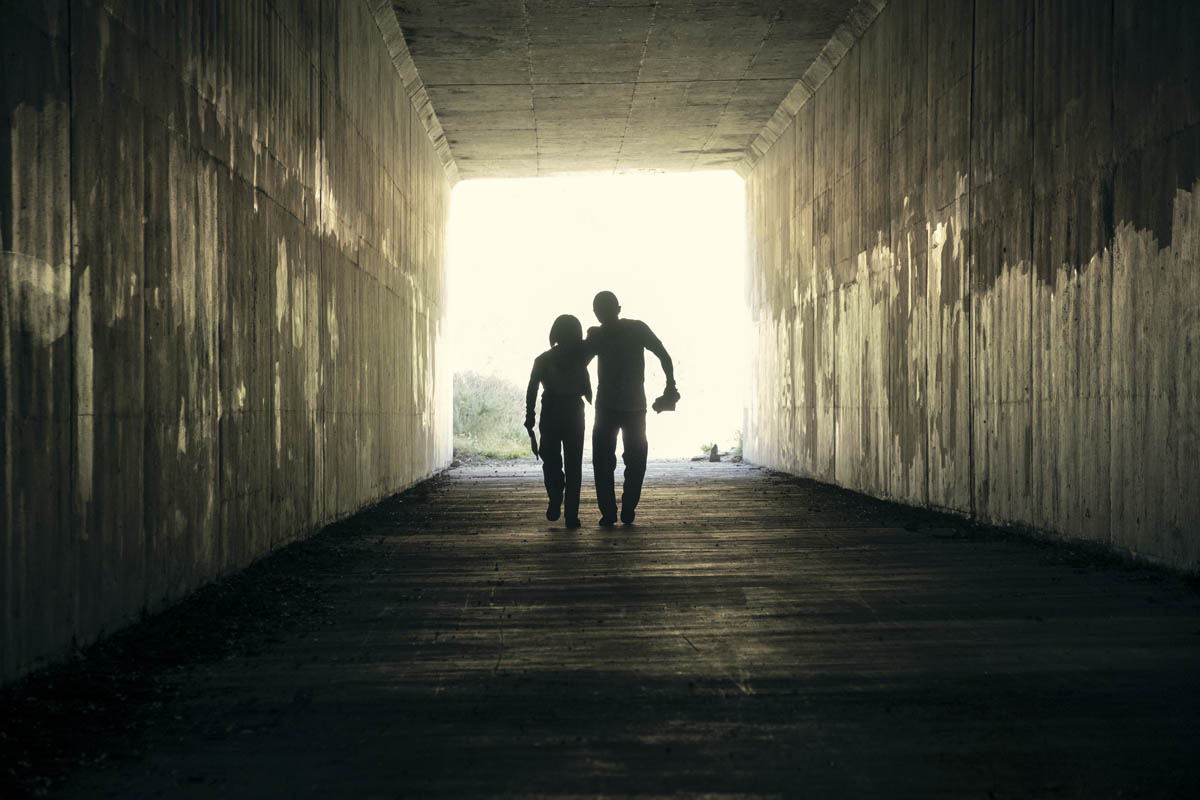
FULLER: I was very drawn to the characters right away. It reminded me a little bit of Parasite, which is one of my favorite movies of the last couple years, where there's just this dichotomy of the rich and the poor that was inspirational.
When I was reading it, I was laughing and it almost felt Coen Brothers-esque, when everything hits the fan at the end. I knew Stephen Yeun was an incredible actor just from watching Minari, which Harry edited, which was incredible.
Is that something you got through your agent or how did you find out about the project?
FULLER: Yeah, she brought it to me. I read it and lucky enough was chosen to interview with Sonny. After speaking to him, I was even more intrigued about jumping on because he gave me this really long list to watch of references. I just knew he had a clarity of vision.
Could you tell me what those references were?
FULLER: He was all about The Sopranos.
YOON: One of the interesting things Sonny said about The Sopranos is that he thinks it’s the funniest show ever on television. I love that description because people think about it as this very serious crime drama, but it is incredibly funny and I think the humor comes from this deep existential place, right?
This deeply identifiable place of how absurd it is that this gangster boss has to go to therapy, in order to deal with these existential issues and these like really deeply identifiable family issues. That's the sort of off-kilter approach that I think Sonny had.
How do we keep switching tone? How do we keep creating unexpected situations so that the audience is moved in scenes in which they should be horrified or laughing in scenes in which it should be deeply sad and constantly defeating those expectations in order to make the audience feel like, “Oh, I don't think I've seen something like this before.”

KIM: I remember in my first interview with Sonny, I referenced after reading the pilot script that it reminded me of some scenes in Punch Drunk Love where Adam Sandler's character feels really beaten down by the world. He's just vibrating with anger and frustration that's bubbling under the surface. Then it just comes out.
I remember he bashes this toilet plunger and the glass shatters everywhere. Specifically, we were talking about that scene because the music in it is very minimal and rhythmic. It adds a whole other character to the vibe of the film. That helped me get the job because Sonny said he was thinking about that stuff as well, so I felt good about that reference.
Before we leave, I would love for each of you to give a shout-out to the team you worked with.
FULLER: I want to give a special shout-out to my great assistant Ryan Rambach. He was instrumental with building temps and keeping morale going when we were working on the temps. He did a great job with sound work and all of the above. Great assistant. Thank you, Ryan. I'm glad you're enjoying the success of this show and I'm looking forward to working together again soon.
KIM: Yeah, same exact thing with Josh Stein, my assistant as well. I know he assisted you towards the end as well. Throughout the process he did an incredible job of building temp stuff and did some amazing sound work as well. I had a great time working with him.
ZEMPEL: Thank you to Lily Wild, who's been with me for a while now. She's my first audience for everything that I cut, and I trust her taste and she's just an invaluable asset to my process. I'm so grateful for her care and dedication and thoughtfulness and thoroughness throughout this process. It was wonderful.
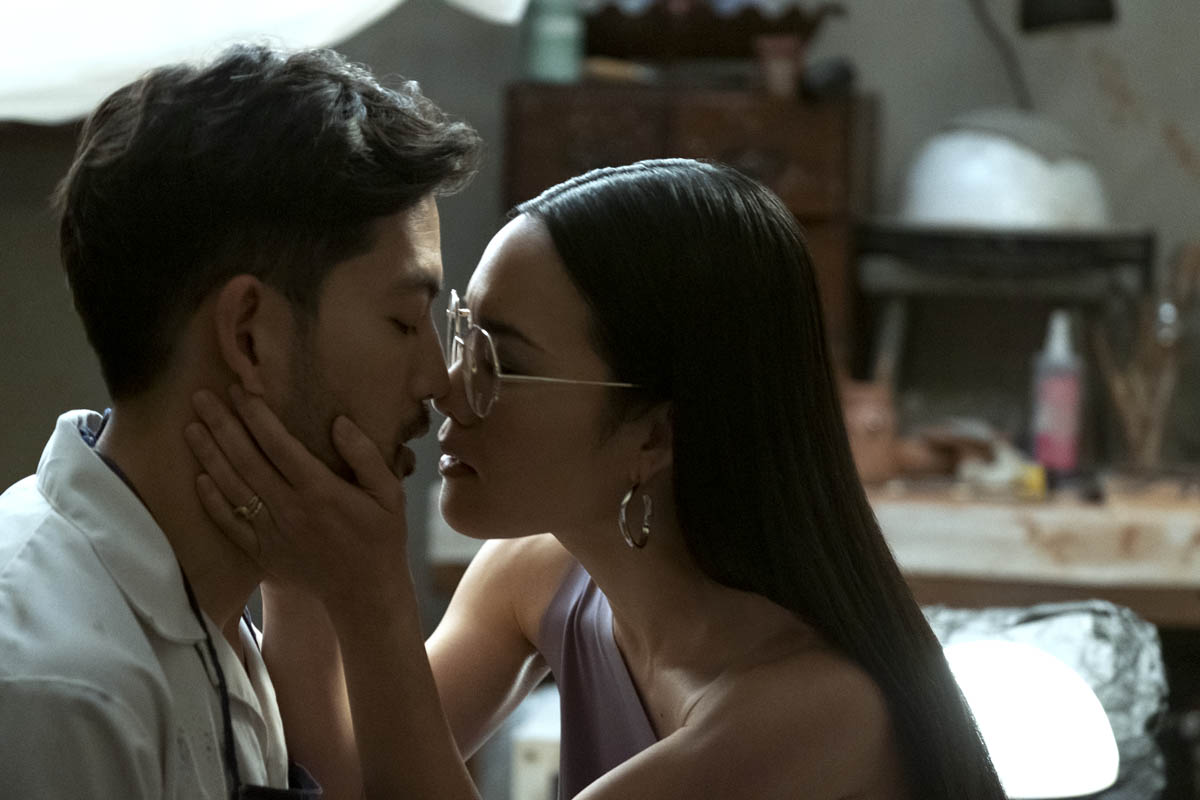
YOON: I was also assisted by Josh Stein, and he was a wonderful collaborator. He got to do the first cuts of a couple of scenes that are in the first episode. It was exciting to work on those with him and have a dialogue that gave me insight into how best to tonally present the show.
He's also an amazing visual artist. It was a true pleasure to talk about the art that's featured in the show with him and to see him create these bits of artwork too that were inspired by the show. Big shout out to him, and he was an amazing help.

